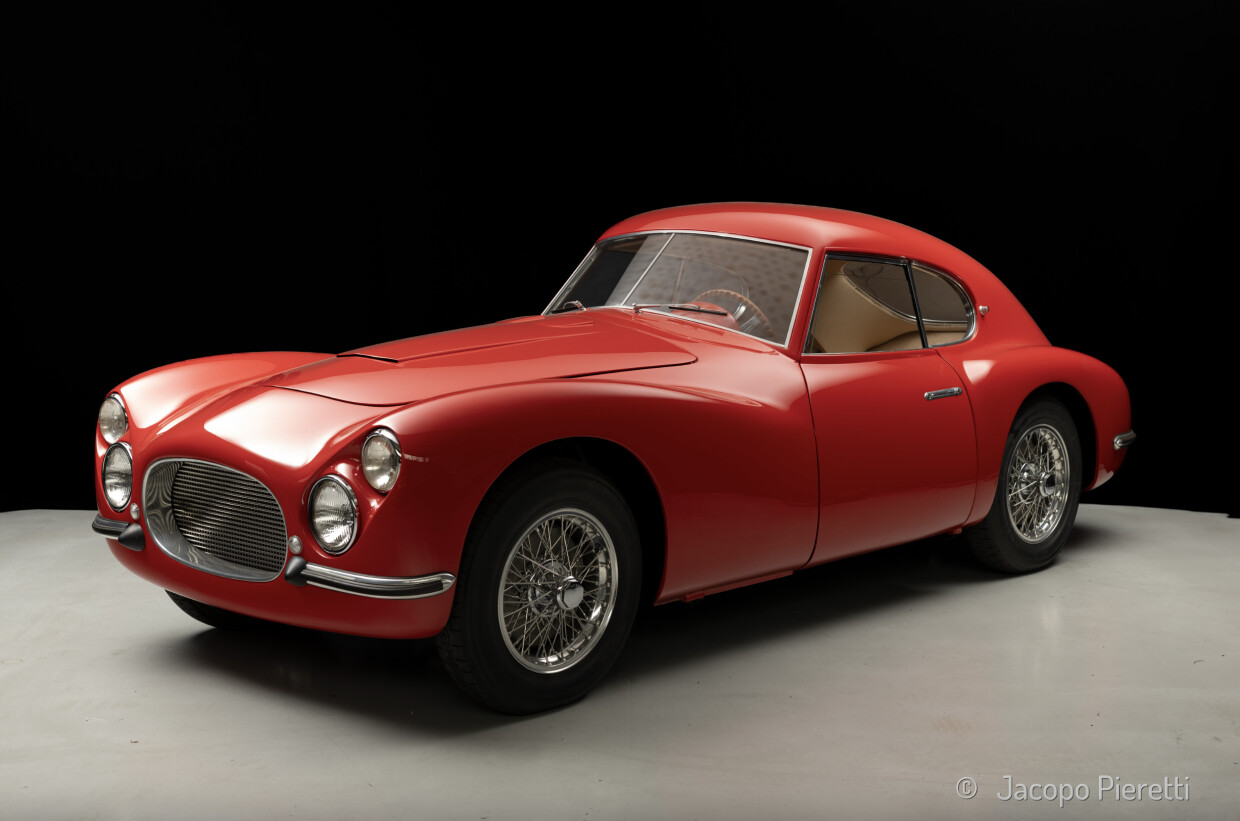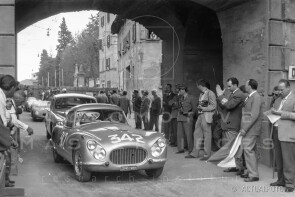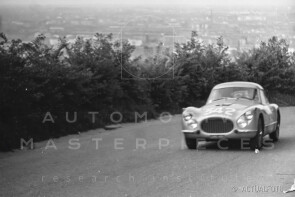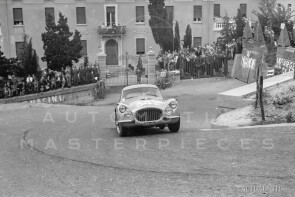
1954 Fiat 8V
ON/OFF
Why am I an Automotive Masterpiece?
L. Limited edition cars
no. 29 manufactured
In the postwar period, Fiat was working on an eight-cylinder engine internally known as Tipo 106. The engine was originally designed by Dante Giacosa for a luxury sedan, but that project was stopped. Rudolf Hruska, at the time working at the S.I.A.T.A., was given the task to design a car around the V8 engine. The development took place in absolute secrecy. As not to stress the experimental department of Fiat, production of the chassis was also taken up by S.I.A.T.A. Styled by chief designer Fabio Luigi Rapi, the Fiat 8V or “Otto Vù” was presented to the Italian press in February 1952 and first exhibited the following March at the Geneva Motor Show. The car shapes saw several changes in time: the prototype used an art deco grill that extended into the hood. A second series was made featuring four headlights with some of the later cars having a full-width windscreen. A high-performance coupé, destined to compete in the GT class: the 2-liter 8V model was a departure from the usual Fiat production. It was really welcomed by Italian private drivers, it inspired the tuners, and it was, in a word, the car to beat in the 2-liter class, also thanks to the special versions built by Zagato or Siata. The Fiat V8 had a 70° V configuration of 1996 cc of displacement, at 5600 rpm the engine produced 105 hp (78 kW) in standard form with double two-barrel Weber 36 DCS carburetors, giving a top speed of 190 km/h (118 mph). Some engines were fitted with huge four-throat Weber 36 IF4/C carburetors offering 120 bhp, but the intake manifold was very rare. The Fiat 8V is the only eight-cylinder built by Fiat. The engine was connected to a four-speed gearbox. The car had independent suspension all round reworking the Fiat 1100 ones and drum brakes on four wheels. As the body was welded to the chassis it was a semi-unitary construction. Only 114 of these high-performance coupés had been produced, 63 with a “Fiat Carrozzerie Speciali” body, 34 first series and 29 second series. It was made available anyway in different body styles, offered by the factory and by various coachbuilders like Zagato, Pinin Farina, Ghia and Vignale. The production ceased in 1954.
The Fiat 8V, chassis no. 106*000089*, was completed at the factory on March 11, 1954, fitted with engine no. 000119. Its chassis is a later Fiat production model, using round tubing instead of the oval tubing found on the SIATA-built prototype chassis. The car is one of only 29 second-series examples to receive factory coachwork by Carrozzerie Speciali Fiat, designed by Fabio Luigi Rapi and distinguished by its twin headlamp design. Its first registration (Roma 220451) came one year later, a delay that was not uncommon among 8V cars. The car was delivered to Vincenzo Orsini, a Fiat dealer in Rome, who later sold it to Antonio Triglia, the car’s first private owner, in late March 1955. Excluding possible cases of mistaken identity, Antonio Triglia, son of the agricultural entrepreneur and former mayor of Pomezia, Manlio Triglia, was heir to the historic family estate in San Polo d’Enza, known as Villa Triglia-Ruini. He came from a cultured and politically active environment—his uncle was Meuccio Ruini, a founding father of the Italian Constitution and President of the Senate—and lived between Emilia and Lazio, known for his reserve and discretion. At the time, Fiat was actively promoting the competitive potential of the 8V through its dealership network, and it is likely that Triglia, like other private customers, underwent a performance evaluation by Orsini. In return, it seems he may have participated in some racing events. However, the only confirmed record of chassis no. 106*000089*’s competition history is its entry in the Bologna–San Luca hillclimb race in April 1957. By October 1960, Triglia sold the car to its next and final Italian owner, Francesco Molino. The sale was mediated by Var Srl, Vendita Autoveicoli Roma (formerly Giannini & C. Srl). According to Tony Adriaensens, at some point, the car was fitted with engine no. 000184. The car somehow crossed the ocean. Some accounts suggest that it was involved in obscure dealings and may have had a racing history in North America, but there is no solid evidence to support these claims. Around 1979, the car was discovered in a barn in West Bend, Wisconsin, USA. It then became the property of a California-based collector, who later sold it to another enthusiast. This second collector commissioned a first restoration, repainting it red with light brown leather upholstery. This restoration included minor liberties from the original specification. In this configuration, now fitted with a third engine—a Siata 208 unit (no. BS 075), chassis no. 106*000089* was offered at auction by RM Sotheby’s in Monterey in 2022 and sold. The car is currently undergoing restoration.




